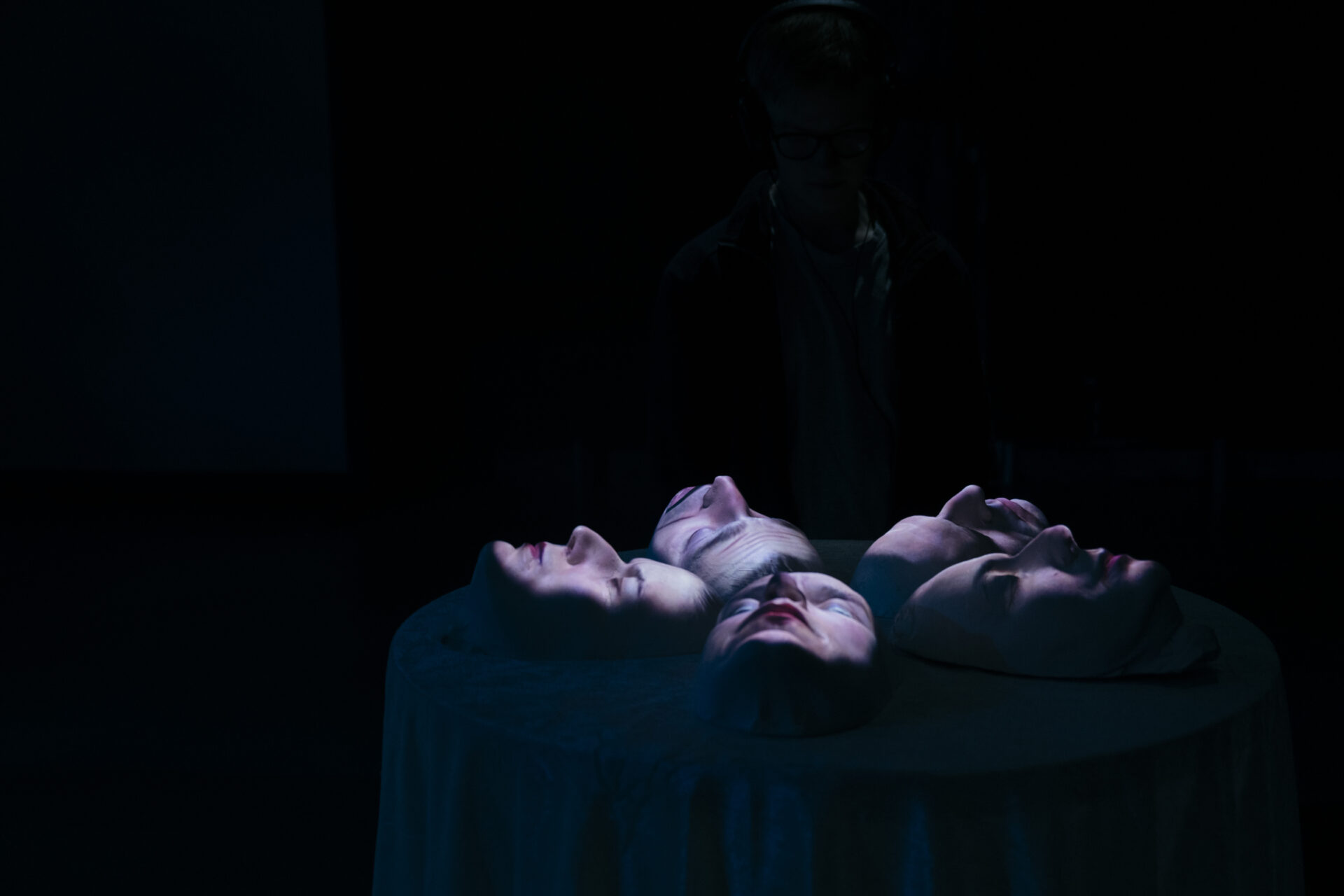Interdisciplinary duo Brigitta Muntendorf and Michael Höppner’s audiovisual installation Memorial of Rebellion (2020).

Brigitta Muntendorf’s new installation, Memorial of Rebellion, is about protest songs. How have protest songs been lately? Are they good? In 2016, singer-songwriter Amanda Palmer described the inauguration of Donald Trump as ‘our moment’. He was ‘going to make punk rock great again’, ushering in an era of songs about his fascism. It’s a well-worn theory: the worst times will produce the best art. And it’s dodgy, in the main, because it positions protest as a prize, something we luxuriate on. But we’re in a strange time: the mainstream is different now, curiously politicised, and so it’s worth thinking about: have protest songs become a commodity? In Memorial of Rebellion, Muntendorf considers the genre on these terms, exploring the strengths and fragilities political songs are born from. She considers how protest music has evolved, to what communities it’s belonged, and how it’s even ended up in the behemoth of pop music, travelling for free on industry power.
Muntendorf is fascinated by our generation’s version of protest music, interested in how musical uprising conflicts with a capitalist industry model. She’s noticed a smoother protest song, one that sounds like something a lot of people would listen to. She calls it ‘contradictory, resisting and affirmative’, considering different flips of the same coin: ‘uproar’, yes, but also ‘party’, explosive songs of righteous celebration. The contradiction is built into it; how can pop music be truly uncomfortable? A famous protest song in this world fluctuates, says Muntendorf, moving ‘between riot and conformity, [appearing] as immortal as it is vulnerable at the same time.’ Songs of Rebellion, the multimedia work for a small group of performers that she has created together with Michael Höppner, is a surreal inversion of those things, choreographed so that the performers appear like a community, or even a cult, of the music they’re playing. Throughout the piece, they make bizarre, indecipherable gestures, floating aimlessly through a torrent of stray noises.